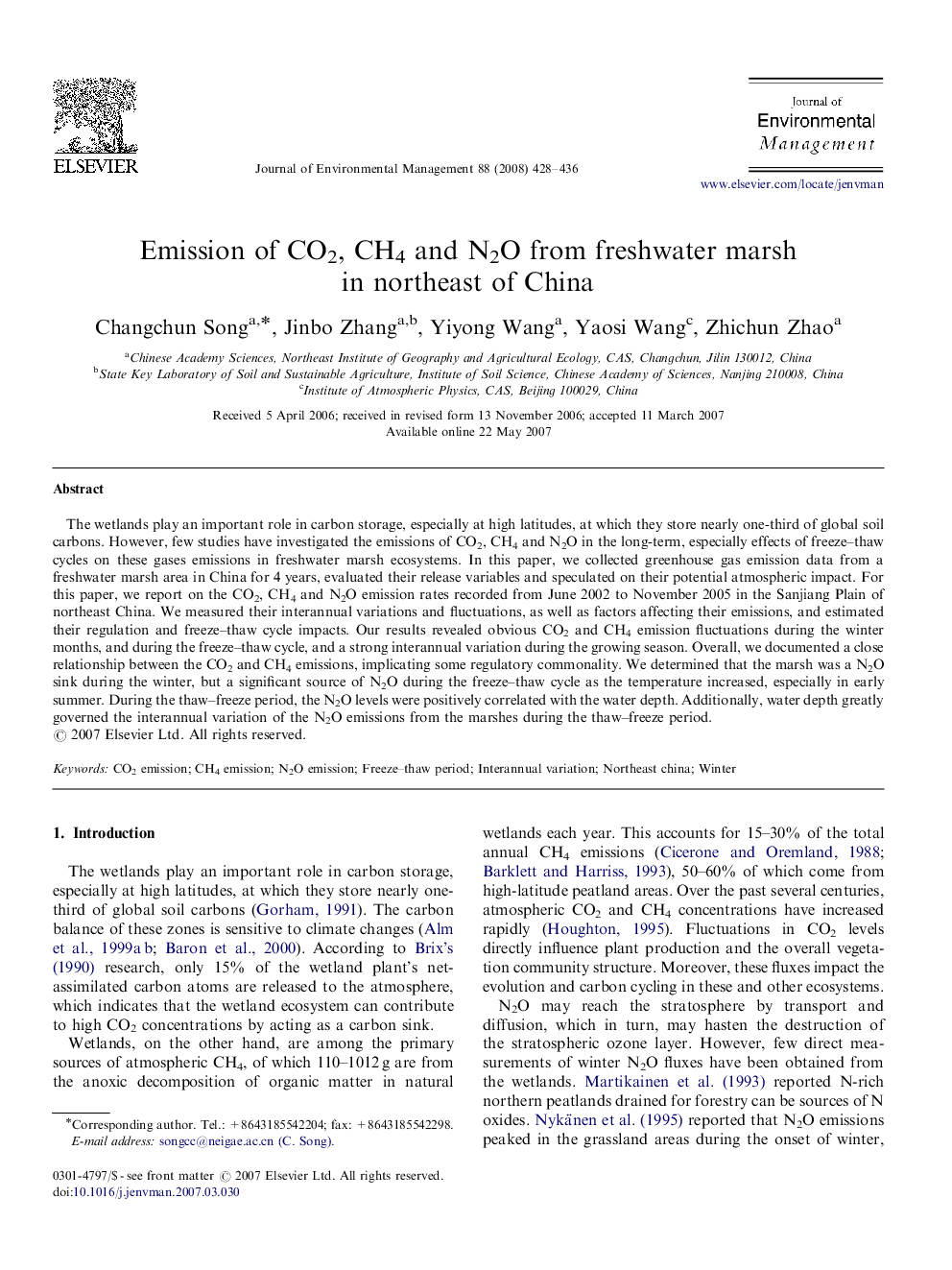| Article ID | Journal | Published Year | Pages | File Type |
|---|---|---|---|---|
| 1058622 | Journal of Environmental Management | 2008 | 9 Pages |
The wetlands play an important role in carbon storage, especially at high latitudes, at which they store nearly one-third of global soil carbons. However, few studies have investigated the emissions of CO2, CH4 and N2O in the long-term, especially effects of freeze–thaw cycles on these gases emissions in freshwater marsh ecosystems. In this paper, we collected greenhouse gas emission data from a freshwater marsh area in China for 4 years, evaluated their release variables and speculated on their potential atmospheric impact. For this paper, we report on the CO2, CH4 and N2O emission rates recorded from June 2002 to November 2005 in the Sanjiang Plain of northeast China. We measured their interannual variations and fluctuations, as well as factors affecting their emissions, and estimated their regulation and freeze–thaw cycle impacts. Our results revealed obvious CO2 and CH4 emission fluctuations during the winter months, and during the freeze–thaw cycle, and a strong interannual variation during the growing season. Overall, we documented a close relationship between the CO2 and CH4 emissions, implicating some regulatory commonality. We determined that the marsh was a N2O sink during the winter, but a significant source of N2O during the freeze–thaw cycle as the temperature increased, especially in early summer. During the thaw–freeze period, the N2O levels were positively correlated with the water depth. Additionally, water depth greatly governed the interannual variation of the N2O emissions from the marshes during the thaw–freeze period.
